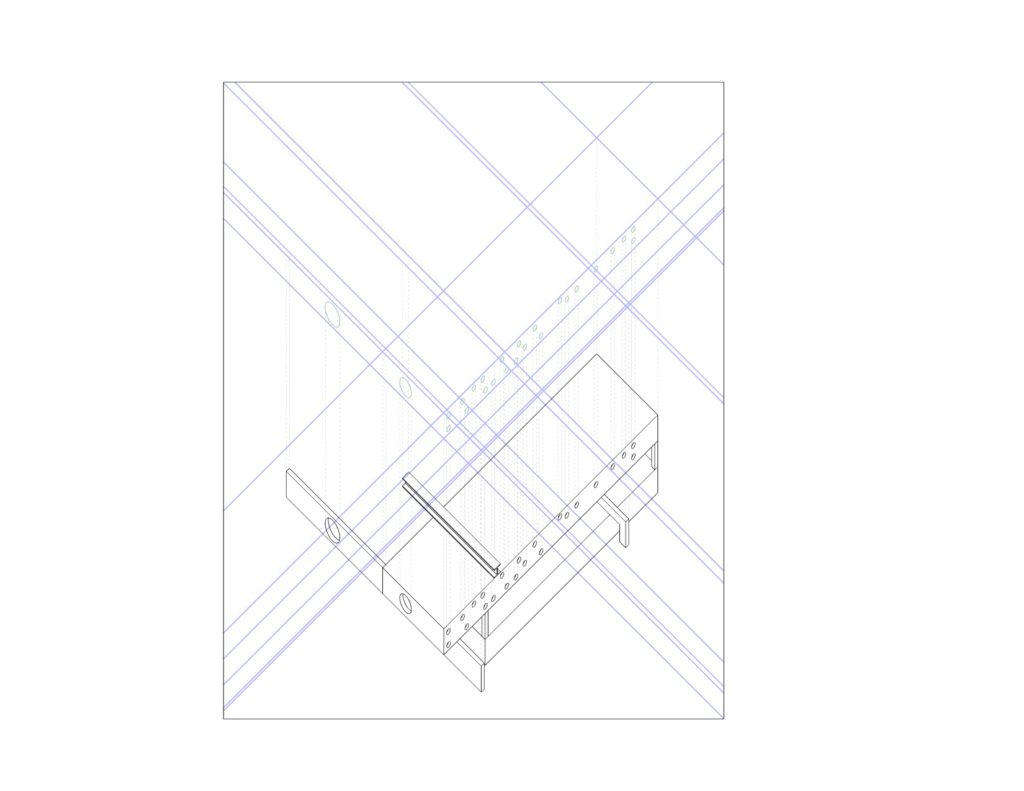My initial definition for collage, coincidence and collision:
- Collage – a layering or combination of various components where they are organized in a complimentary manner; planned repetition
- Collision – an unexpected intersection/discordance of two or more components
- Coincidence – a situation where components work well together in a seemingly unplanned manner
Toyo Ito
Started by diagraming the floor plan and the lines that would compose the arches and columns inside the building. With the shapes created by the lines intersecting, I split the shapes created into 3 categories: triangles, quadrilaterals and pentagons. The combination of these 3 shapes creates the floor plan, so I called it a collage. Each of those was designated a color and moved to a different height in regard to the original floor plan.
The arches were also created using those lines and dashed lines were drawn to show the how the boundaries of the shapes intersect with the ends of the arches on the bottom.
House in Bordeaux
From the beginning the main thing that I realized about this piece was the repetition of shapes and the symmetry on the building as its pieces balance each other out. So I first defined it as a collage, because the repetition of pieces create a whole. However as I started to work on it I started to notice that this collage was in reality, not one but two collages, and these collages are a collision within themselves. Meaning the straight lines and the circles are actually opposite.
So I extruded the lines and shapes I thought had something in common within themselves and extended the lines in order to visualize how there’s a pattern created by how the shaped were places.
Grace Farms
Worked with the idea of splitting the piece into two colors. The big long and curvy shape as purple, and the “rooms” as yellow. By playing around with those notices that there is no real reason onto why those are placed the way they are, meaning those work merely as a coincidence. So I worked with moving those around and making different combinations to show how there are several ways that these could be combined.
The way I diagramed this was by creating a “puzzle” with the combinations as 3 degrees of coincidence:
1- The original shape
2- Only rotating and inverting the purple piece and placing it on top of the fixed yellow blocks
3- Moving the yellow blocks around in a way that it would still be supporting the purple curve





